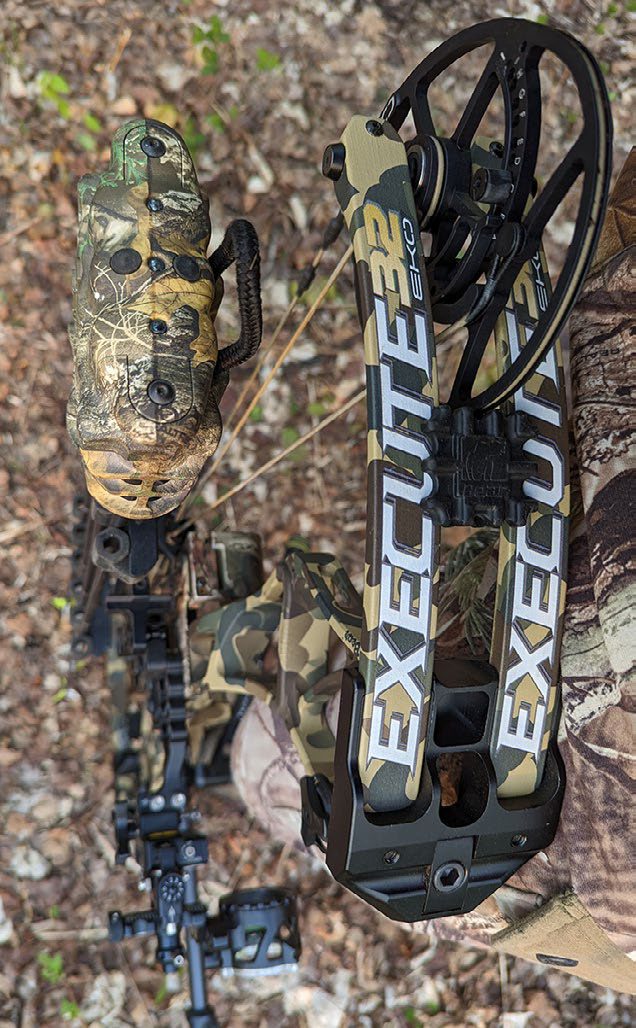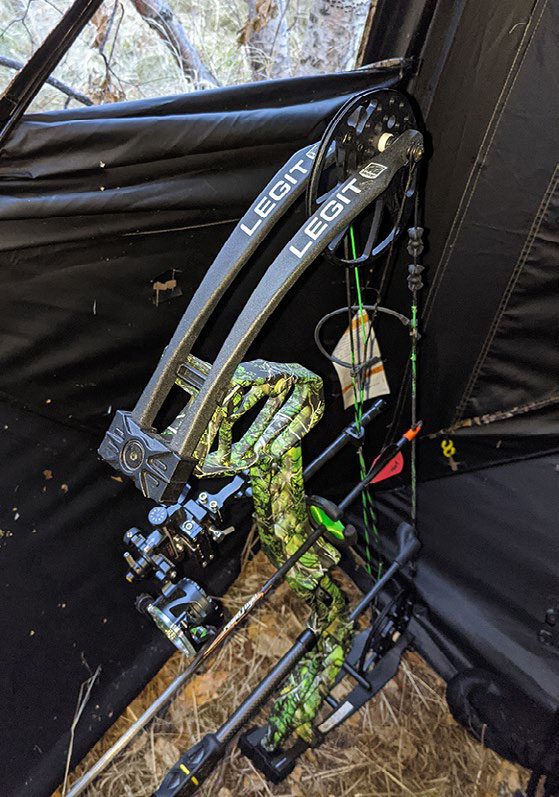Vertical or Horizontal Bow – A Complete Guide to Choosing Between Compound and Cross Bows
Embarking on the journey of selecting the perfect bow is akin to forging a partnership with a silent companion in the world of archery. The first crossroads you encounter in this expedition is the fundamental choice between a vertical compound bow and a horizontal crossbow. Each option holds
its unique merits, intricacies, and considerations, shaping your archery experience in distinct ways. In this detailed guide, we will meticulously explore the major considerations when purchasing each type of bow, delving deeper into the realms of budget, comfort, weight, adjustability, and forgiveness for vertical compound bows, and budget, dimensions, maneuverability, and weight for crossbows.
CHOOSING COMPOUND BOWS
Selecting a compound bow involves a thoughtful consideration of various factors to ensure a personalized and effective choice. The archer’s skill level, intended use, and physical attributes play pivotal roles in this decision-making process. Beginners often prioritize ease of use, adjustable draw lengths, and forgiveness in aiming, opting for bows with lower draw weights and a generous brace height to accommodate learning curves. Intermediate archers might focus on performance features such as speed, accuracy, and customizable settings like draw weight and let-off.
Experienced archers, on the other hand, may prioritize specialized features like a smooth draw cycle, reduced vibration, and a compact design for maneuverability. Draw length, draw weight, axle-to-axle length, and brace height are critical specifications to match with personal preferences and shooting styles. Additionally, assessing the bow’s technological features, such as cam systems, riser materials, and vibration dampening technologies, ensures compatibility with the intended use, whether it be target shooting, hunting, or competitive sports. Ultimately, the process involves balancing individual preferences, skill level, and purpose to select a compound bow that aligns with the archer’s unique needs and enhances their overall shooting experience.

BUDGET
Vertical compound bows, like the harmonious symphony of an orchestra, present a diverse range of options catering to archers across different budget brackets. Whether you’re a novice or a seasoned enthusiast, assessing your budget is the initial chord struck in this symphony of choices. Explore the market to find a bow that not only aligns with your financial constraints but also offers features that resonate with your archery aspirations.
COMFORT AND FEEL
The journey towards archery mastery demands a seamless connection between archer and bow. Within the realm of vertical compound bows, comfort is not merely a luxury but a prerequisite for consistent, accurate shooting. Pay meticulous attention to the grip design, draw length, and overall ergonomics of the bow. Some bows offer customizable grips, allowing you to tailor the fit to your hand, fostering an intimate bond that enhances the entire shooting experience.
WEIGHT
The weight of your vertical compound bow is not just a numerical statistic; it is a critical factor influencing both portability and shooting stability. This consideration is a delicate dance between the physicality of the archer and the demands of steady aim. Striking the right balance ensures the bow is not just manageable during transportation but also stable enough for precise, consistent shots.

ADJUSTABILITY
As your archery journey evolves, so should your bow. The adaptability of a vertical compound bow is a key consideration, especially for those seeking continuous improvement. Look for bows with adjustable draw lengths and weights, offering the flexibility to fine-tune your setup as your proficiency advances. This feature transforms your bow from a static tool to a dynamic companion on your archery odyssey.
FORGIVENESS
In the intricate language of archery, forgiveness refers to a bow’s ability to tolerate slight form imperfections without compromising accuracy. Vertical compound bows vary in their forgiveness levels, with some designed to be more forgiving of errors. This quality makes them particularly appealing to beginners or archers refining their techniques, offering a smoother learning curve and a forgiving margin for improvement.
CHOOSING A CROSSBOW
Selecting the right crossbow involves a meticulous evaluation of various factors tailored to the individual’s needs and preferences. Novice crossbow users often prioritize ease of use, opting for models with adjustable draw weights and simple cocking mechanisms. Compact and lightweight designs are also popular for beginners seeking maneuverability. Intermediate users might focus on enhanced features like improved speed, accuracy, and additional accessories such as scopes (like the burris eliminator 6) and dampeners.
Experienced crossbow hunters or target shooters may prioritize specialized features like advanced cam systems, adjustable stocks, and noise reduction technologies and then the best crossbow scope, crossbow bolts, crossbow broadheads, and more.. Factors such as draw weight, power stroke, and arrow speed are crucial considerations to match the crossbow’s capabilities with the intended use, whether it be hunting large game or participating in competitions. Additionally, assessing the build quality, material durability, and safety features, such as anti-dry fire mechanisms, ensures a reliable and secure experience.

BUDGET
The landscape of crossbows mirrors the diversity found in vertical compound bows. Whether you are an entry-level archer or a seasoned marksman, there is a crossbow that aligns with your budget constraints. The key is to navigate this symphony of choices, balancing features, performance, and your financial considerations to find the perfect harmony in your chosen crossbow. Perhaps you don’t need all the latest and greatest or advanced features to get started. Always ask yourself, how will this feature help my use case given my experience and skill?
DIMENSIONS
The dimensions of a crossbow are akin to the dimensions of an artist’s canvas – they frame the narrative of your archery story. The axle-to-axle width, in particular, becomes a pivotal consideration, especially if your archery adventures involve navigating tight spaces or negotiating through dense vegetation during hunts. A crossbow with optimal dimensions ensures you can seamlessly blend power with precision in any setting.
MANEUVERABILITY
Crossbows, heralded for their ease of use, derive their prowess from a delicate dance of power and grace. The maneuverability of a crossbow is a crucial aspect, particularly for those who engage in hunting scenarios. The choice of a crossbow should strike an exquisite balance between raw power and nimble maneuverability, ensuring you can seamlessly handle it in diverse environments without compromising on accuracy.

WEIGHT
The weight of a crossbow isn’t just a numerical figure; it’s a testament to the balance between power and usability. Assess your physical condition and intended use – whether it be long hours in the field or quick maneuvers in confined spaces. The right balance in weight ensures that your crossbow doesn’t just pack a punch but also remains wieldy for extended periods.
CONCLUSION AND FINAL THOUGHTS
As you stand at the crossroads of choosing between a vertical compound bow and a crossbow, there are additional factors that weave into the mix of your decision-making process such as skill level, planned uses, maintenance and those important legal considerations. Whatever bow orientation you choose, ensure you try as many makes and models as possible. What’s feels right for one person doesn’t always for another, that’s why it’s such a personal decision.
Consider your skill level across the archery spectrum. Vertical compound bows, with their intuitive design, might be more appealing to beginners, allowing them to focus on mastering fundamental techniques. On the other hand, crossbows, with their quick learning curve, can be an intriguing option for those new to archery, providing a swift entry into the world of bows.
Reflect on how you plan to use your chosen bow. If your aspirations revolve around target shooting or 3D archery, a vertical compound bow might offer the versatility to navigate various scenarios. For those driven by the pursuit of speed and power, a crossbow can emerge as a compelling choice, especially in hunting scenarios where quick, precise shots matter.

Be cognizant of the legal regulations surrounding bow usage in your region. The archery landscape is dotted with diverse rules and restrictions, especially when it comes to crossbow usage in hunting. Stay informed and ensure your choice aligns with the legal framework governing archery in your area.
Consider your willingness and ability to engage in maintenance tasks. Vertical compound bows often demand more frequent tuning and adjustments, reflecting the intricacies of their design. Crossbows, in contrast, may have simpler maintenance requirements. Assess your commitment to bow care and factor it into your decision-making process.
Whenever possible, immerse yourself in the tactile experience of trying out different bows. Visit archery ranges or pro shops to test the feel, draw, and shooting experience of various models. The resonance between archer and bow is best felt through hands-on experience, allowing you to discern the nuances that shape your archery identity.
In the broad world of archery, the choice between a vertical compound bow and a crossbow is a deeply personal decision, influenced by a plethora of factors. As you explore the intricacies of budget, comfort, weight, adjustability, and forgiveness for vertical compound bows, and budget, dimensions, maneuverability, and weight for crossbows, you are crafting not just a tool for precision but a companion for your archery odyssey. With thoughtful consideration and perhaps a few test shots, you’ll find the bow that resonates with your archery goals, propelling you into a journey of skill development and bow mastery. Whether you find your rhythm in the elegant draw of a vertical compound bow or the powerful release of a crossbow, the bow you choose becomes an extension of your archery identity, echoing the legacy you craft with each shot and enhancing your enjoyment afield.

Related Articles:
Per our affiliate disclosure, we may earn revenue from the products available on this page. To learn more about how we test gear, click here.





